It’s Friday, and that means the weekend is almost here, bringing with it the perfect opportunity to unwind and relax. Picture a cozy Saturday, free from the stresses of the workweek and the discomfort of formal attire. Your plan is to kick back with your loved ones, enjoying drinks, snacks, and conversation. As you enter the living room, you might be met with an unappealing sight. Is your current sofa worn and tattered, with damaged upholstery and uncomfortable cushions? If so, it’s time to consider a replacement. Whether you’re interested in a stylish leather sofa, a classic grey couch, or a practical sofa bed, our shop and online store offer a wide range of options. In our online shop or at our nearest branch, you’ll find helpful tips for choosing the perfect centerpiece for your living space, as well as advice on how to maintain it for long-lasting enjoyment.
1. What’s the Distinction Between a Sofa and a Divan?
When shopping for new seating, you’ll likely encounter the terms “sofa” and “couch.” The difference is simple: a sofa has two armrests, while a couch has just one armrest or none at all. You can decide for yourself which option best suits your needs.
2. What Kinds of Sofas Are Available?
In addition to the general difference between sofas and divans, there are various subtypes and models of each. We’ll outline them for you below.
2.1. Loveseats & Apartment Sofas
Loveseats and apartment sofas are well-suited for kids’ rooms, shared spaces, or living rooms due to their compact size, which allows them to fit into any room without taking up much space. Their diverse shapes and colors make them a stylish addition to any living area.
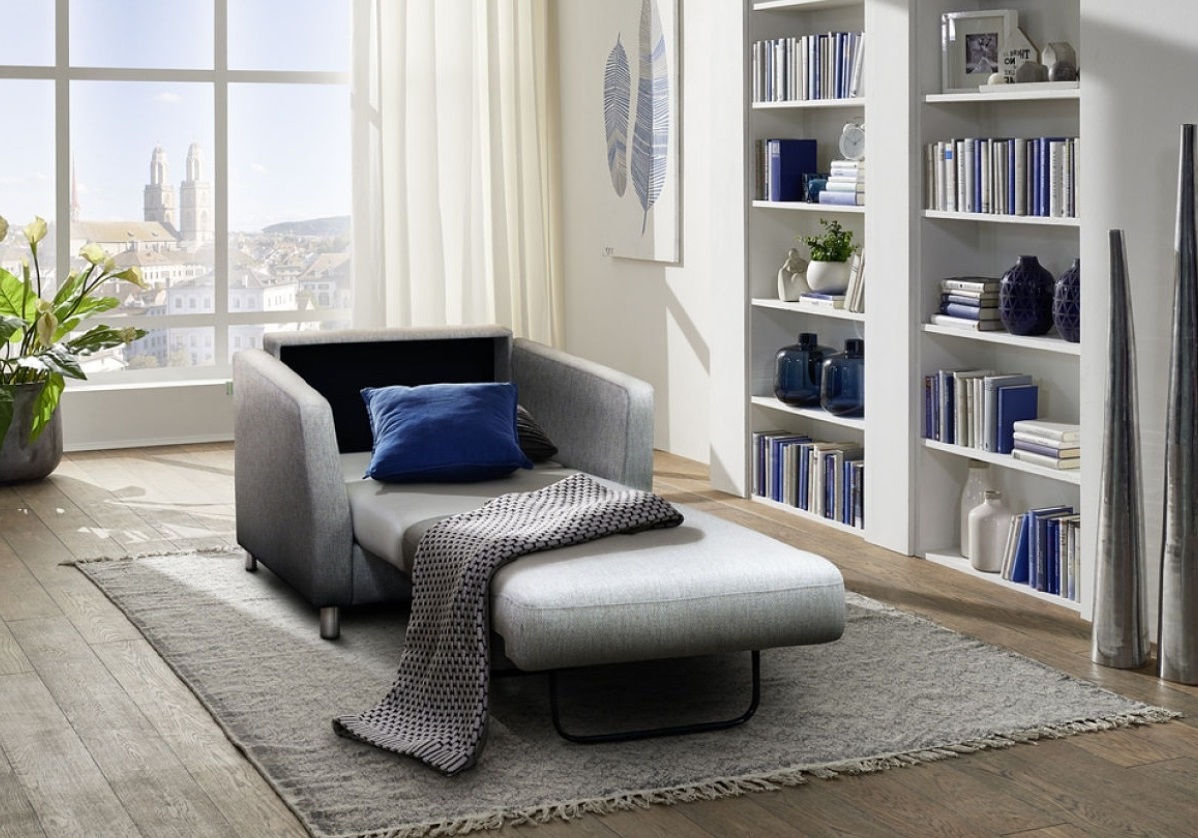
2.2. Sleeper Sofas – Convenient Guest Accommodations
Are you someone who frequently hosts guests overnight or for the weekend? A sleeper sofa offers you and your visitors the best of both worlds. By day, it serves as a comfortable seating option; by night, simply fold down the backrest to transform it into a guest bed. Keep in mind that the size of the sleeping surface depends on the sofa bed’s dimensions. When shopping for a sleeper sofa, consider its width. If you’re seeking a sofa bed for two people, a 3-seater model is advisable. A 2-seater option is suitable if the armrests are removable or flexible, such as with a futon cushion.
When purchasing a sleeper sofa, also consider which parts of the model can be extended or folded out to determine whether it will fit against a wall. A sleeper sofa is an excellent choice when space is limited, and it can be placed in the living room, study, or children’s room. A sleeper sofa with a storage compartment is very convenient, allowing you to easily access sheets, blankets, and pillows for your guests. In addition to traditional sleeper sofas, there are exceptional options featuring a futon mattress or a full box spring upholstery. It’s a good idea to try out the daybed before making a purchase.
Depending on how frequently you intend to use the sleeper sofa for sleeping, it’s worth comparing different products when making a purchase. There are budget-friendly options suitable for occasional overnight stays. If you require a sofa with a sleep function for daily use due to space constraints, it’s advisable to invest in a higher-quality model. Known as “everyday” sleeper sofas, these are designed for regular use, featuring durable cushions and folding mechanisms.
2.3. Two-Seater Sofas – Ideal for Students and Children
A two-seater sofa, commonly known as a loveseat, is a great option when space is limited. It’s especially well-suited for children’s rooms, studio apartments, or shared student accommodations. Two-seaters are available in various configurations, often including a sleeper sofa option. Due to their size, they’re perfect for adding a vibrant touch to your room. You can enhance this effect by opting for models with distinctive shapes. The versatility of a two-seater makes it easy to expand your existing seating arrangement. At the same time, they’re lightweight compared to other sofas. If you frequently redesign your space, a two-seater sofa can quickly adapt to new layouts.
2.4. 3-seater – Perfect for small families
Do you need seating for you and your loved ones but have a small living room? The 3-seater sofa is the answer: sitting between the 2-seater and the corner sofa in both price and size. Like the 2-seater, it comes in a variety of colors and shapes, from unconventional to elegant. Regardless of how you want to furnish your living space, finding the right 3-seater should be easy. Similar to its smaller counterpart, the 3-seater can be adorned with additional seat cushions in the same style. For instance, pair it with a matching armchair or go bold and opt for a contrasting color. The 3-seater sofa is often available with a sleeper function, providing a spacious reclining area when the backrest is folded down.
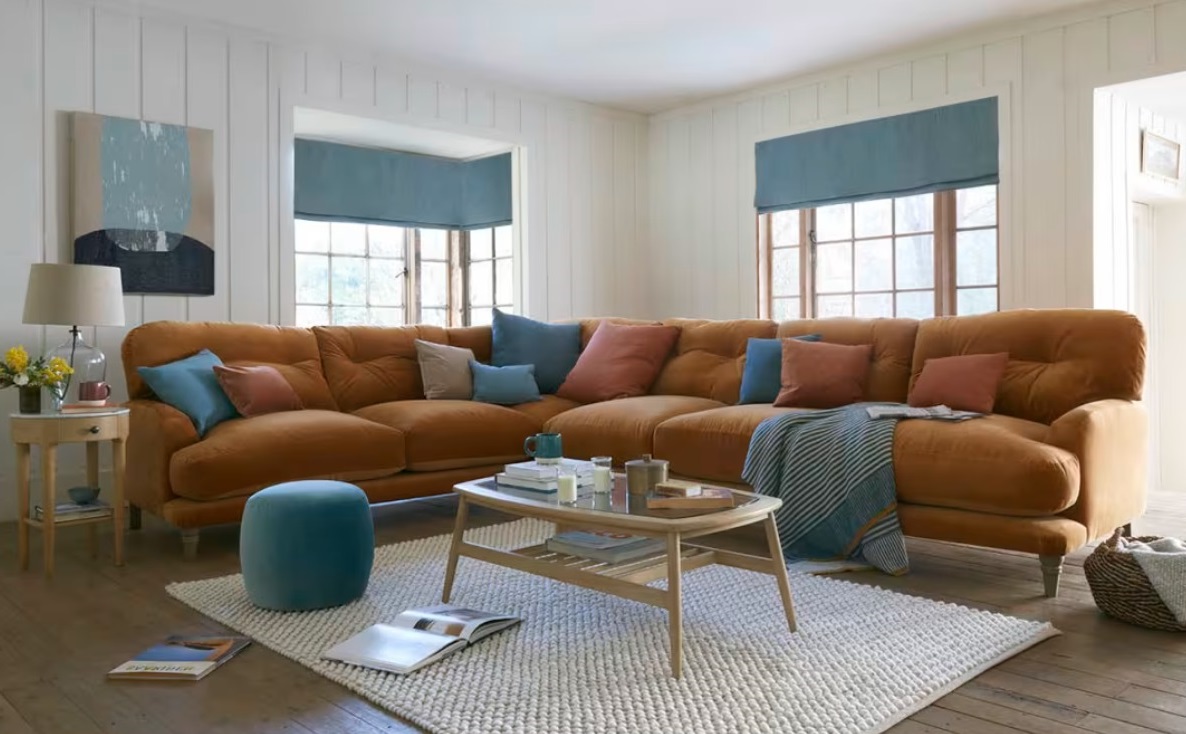
2.5. Large sofa
Do you frequently host guests or have a large family? The large sofa offers ample seating for everyone! It comes in various styles, such as L-shaped corner sofas, U-shaped living room sets, spacious sofas, and seating groups. In addition to their design, they vary in spatial impact and practical value.
2.6. Corner sofas – Comfortable seating and space-saving
For a comfortable lounging experience, there’s nothing quite like a corner sofa. The L-shape design makes this possible. This configuration, achieved by adding cushions to the corners of the sofa, extends into the room. The corner cushions provide a soft space for your legs when you want to take a nap. Even stretching out your legs while watching TV feels very comfortable thanks to the corner cushions. The L-shape also allows for more efficient utilization of room corners compared to conventional sofas. Since corner sofas are typically as wide as a 3-seater sofa, they easily accommodate friends and family. Therefore, if you enjoy lounging in front of the TV, a corner sofa is a great choice.
For those who frequently host guests, investing in a corner sofa with a sleeping function might be a good idea. By folding out a surface, a comfortable guest bed can be set up within moments. As corner sofas occupy more space than 2- or 3-seater sofas, it’s important to carefully consider the color choice. A bright red or curry corner sofa can become a real focal point, but it shines best in a large room. In smaller living spaces, vibrant colors can quickly overwhelm the room or appear too dominating. For a more spacious feel in a compact room, opt for soft, light colors. A corner sofa in cream, beige, or light gray establishes a harmonious base and can be wonderfully paired with various pieces of furniture.
2.7. Living landscape – Grandeur for the living room
A living landscape is a larger and lengthier version of a corner sofa. Its L-shape is complemented by an additional upholstered corner, creating a U-shape that encourages comfortable conversations. The added upholstered corner is typically slightly shorter, keeping the pathway in your living room clear despite its substantial size. Consider a living landscape if you frequently entertain guests or have a large family. Place a modern rug underneath the sofa, position a discreet coffee table in the center of the U-shape, and your cozy seating area is set. Due to its significant footprint, it’s advisable to opt for neutral colors. You can introduce pops of color with decorative pillows or throws.
2.8. Large sofa – Ultimate comfort
In addition to the living landscape, the large sofa epitomizes comfort in the living room. Its shape is akin to that of a 2-seater or 3-seater, and it is the seat cushions that make the large sofa “large.” This model is the biggest of all sofa types, which isn’t surprising considering its origins in the United States. Whether it’s friends or family, everyone will find a comfortable spot on the plush cushions. The sofa is so spacious that taking a nap on it feels akin to being in a proper bed. Consequently, it’s perfect for Saturday evenings, whether spent in front of the television or in a home cinema. However, it does occupy a considerable amount of space. It’s best to place it on a contrasting rug at a sufficient distance from other furniture to maximize its visual impact in the room. Before purchasing a large sofa, carefully assess whether your living room can accommodate its size visually.
2.9. Seating group & sofa set – versatile sofa set for spacious rooms A seating group, also known as a sofa set, is composed of a mix of individual armchairs, 2-seaters, and/or 3-seaters. The colors are coordinated, making them ideal for flexible arrangements in the living room. The seating group also complements the lounge. As the elements of the seating group can be freely positioned in the room, they offer an appealing alternative to corner sofas and are suitable for living rooms.
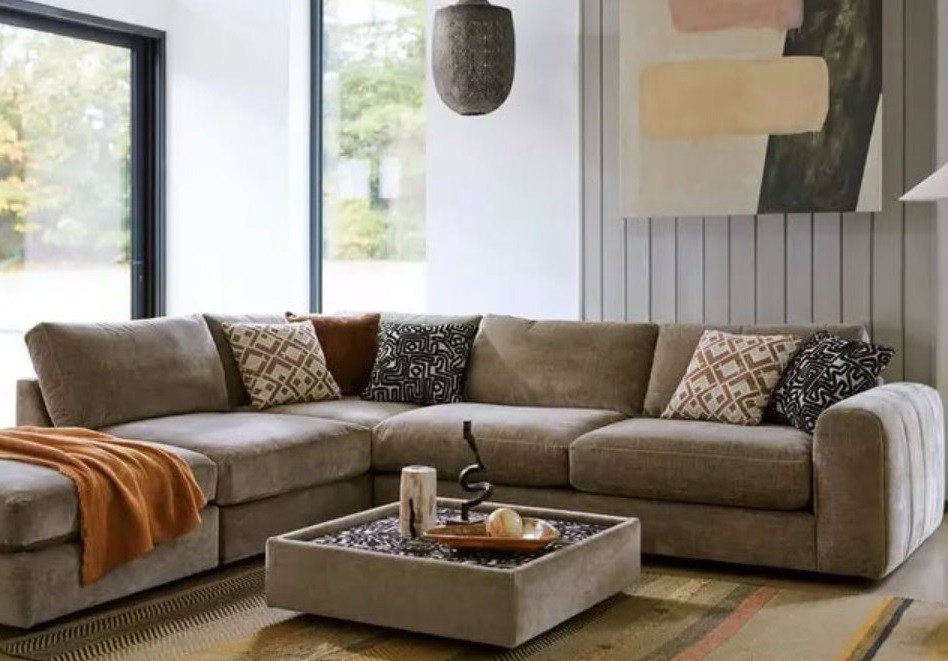
3. Sofa style – how to arrange accordingly
The sofa serves as the focal point of any living room, and its shape determines the spatial effect. Prior to purchasing a new sofa, carefully consider the style of living room you desire. This will help narrow down your options and quickly identify your favorite model. The three most popular living styles are outlined below.
3.1. Scandinavian living style
The Scandinavian living style is characterized by clarity, coolness, and functionality, but is certainly not plain. Furniture shapes are kept simple, while colors range from subtle to vibrant. In addition to the usual gray and brown sofa versions, others come in shades like petrol and deep pink. If you prefer subtle furniture, you can easily introduce colorful accents with interesting patterns on carpets, bedspreads, and wall art.
3.2. Country house style & chalet style
The country house style has been favored for generations. Matching sofas come in soft colors, typically within the earthy color spectrum, but can also include cream or beautiful pastel shades. Textile embroidery is often used on the sofa covers. Avoid sharp and straight shapes, and opt for rounded furniture. When buying a sofa, consider whether the back and armrest contours, as well as the shape of the legs, are comfortably curved. Given the reliance on natural wood surfaces, carefully consider the type of wood to use; mixing wood types can negatively impact the room’s atmosphere. The choice between dark and light colors is inconsequential as long as it appears natural.
3.3. Modern lifestyle
Modern style is characterized by clean, simple shapes and ample space. Embrace minimalism by opting for straight lines, and allow your living room furniture room to breathe. Leather, metal, glossy lacquer, flokati, or fur contribute to a modern atmosphere. Another alternative is wood combined with concrete, although this is challenging to rearrange. A gray or black leather sofa complements the modern style. Keep your walls clear to let your furniture take center stage, and use minimal decorations. A properly staged sofa, coffee table, and rug can serve as the room’s focal point. Consider large arc lights or ceiling lights to illuminate the room, and LED lights on the sofa for a cozy atmosphere.
4. How to optimally position your sofa?
Have you found a stylish sofa that you love and that meets your requirements? Fantastic! Now you need to determine the best placement for it in the room and how to coordinate it with the other furniture.
5. Where is the best place to position the sofa?
In most instances, the living room is where the sofa is situated. Nevertheless, depending on the room’s size, upholstered furniture may also be found in the bedroom, children’s room, or even the kitchen. There are some important guidelines that should be followed in all rooms:
- Avoid placing the sofa directly in front of a heater, as this can impede heat distribution and cause damage to the sofa over time. Maintain a distance of at least 50cm from all heat sources.
- If possible, refrain from placing your sofa directly near a window to prevent the fabric from fading due to exposure to sunlight.
- Ensure that walkways remain unobstructed, and avoid placing the sofa in a manner that obstructs the opening of doors and windows. The placement of the sofa is ultimately influenced by the room’s layout. In a small room where space optimization is crucial, the sofa should be placed against one or two walls. In larger rooms with varying dimensions, a freestanding sofa can act as a room divider.
6. When deciding on the placement of your sofa
take into consideration the layout of the room and explore different possibilities, especially when the sofa is paired with other furniture. Form a seating group by combining two small sofas, ideally positioning them in a corner or facing each other. If space is limited for two sofas, consider adding extra seating with armchairs or poufs.
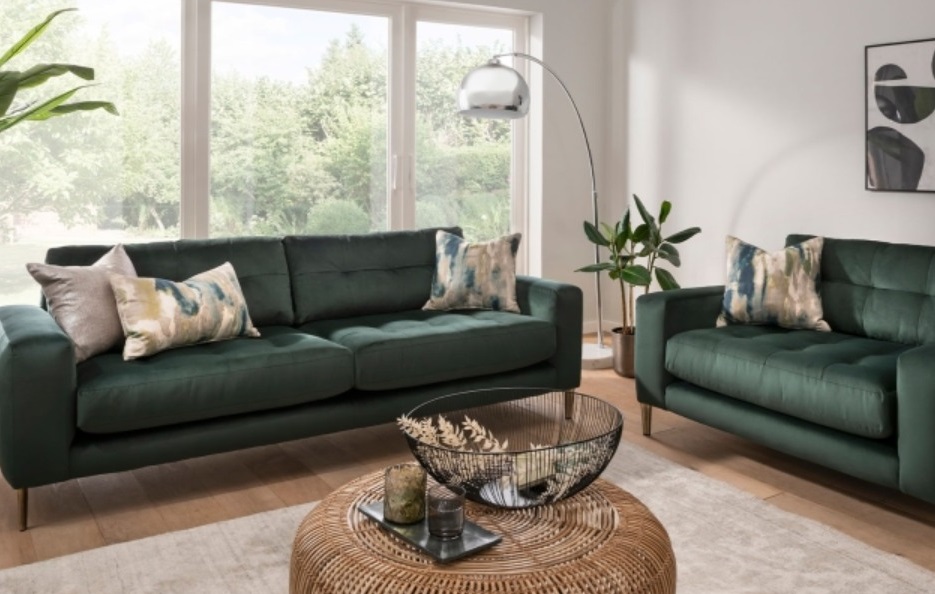
7. The choice of sofa cover and upholstery has a significant impact, particularly on factors such as suitability for allergy sufferers.
For individuals sensitive to dust mites, selecting leather or microfiber upholstery can be beneficial. These materials leave minimal gaps for dust mites to enter the interior of the sofa and breed. Here are the characteristics of different upholstery materials:
7.1. Leather and faux leather upholstery offer an elegant appearance and are easy to clean. They are well-suited for modern interior design and colonial style. This material is resistant to dirt and can be easily cleaned with a damp cloth. Regular care with special products is recommended to maintain the suppleness of the leather. Both leather and faux leather are airtight, preventing dust mites from dwelling inside, which is advantageous for allergy sufferers. However, leather sofas can feel cold initially, requiring additional measures such as using a fabric blanket or preheater, while faux leather sofas are more cost-effective and offer similar benefits. Therefore, faux leather sofas, especially made of microfiber, are recommended, especially for households with children or pets.
7.2. Fabric upholstery provides a variety of colors and textures and is a more affordable option compared to leather. Traditional woven fabrics and modern microfiber are commonly used. Woven fabrics create decorative textures due to deliberately rough weaving, suitable when there is ample lighting. Microfiber, on the other hand, is finely woven, creating a waterproof layer that prevents dust and mites from penetrating, making it ideal for allergy sufferers. Its synthetic nature also makes it non-allergenic. Additionally, microfiber allows for the creation of unique textures that are not achievable with traditional woven fabrics. Fabric sofas come in a wide range of colors, offering versatility to complement or contrast with colored walls and striking carpets.
8. The comfort and support of your sofa depend on its upholstery.
Softer cushions provide enhanced comfort, while firmer cushions offer better sitting support and optimal joint height. Soft cushions are typically made of foam, whereas firmer cushions use a spring core. It’s advisable to check the sofa’s label and test out the sitting and lying positions before making a decision.
9. You can significantly extend the lifespan of your sofa through proper care and maintenance.
Understanding the specific requirements of different upholstery materials can help in making informed purchasing decisions, and there are also useful tips for pet owners.
9.1. To maintain the pristine condition of your sofa, it’s important to follow specific care instructions: Avoid wet cleaning of the sofa to prevent water stains. When removing stains, particularly from rough surfaces, take care to avoid damaging the seat cushion surface. Wipe stains from the outside to the inside to prevent water stains and the spread of dirt. Regularly fluff removable pillows, such as cushions, and rotate them weekly to prevent uneven wear. If possible, remove the covers for added protection. Leather sofas should be treated annually with leather care products to maintain supple and dirt-resistant properties, as prolonged neglect can lead to drying and cracking of the material.
9.2. Which sofa is best for cats?
For those who own small cats, microfiber fabric is the ideal choice for a sofa. It is typically very smooth and tightly woven, which makes it difficult for cat claws to pull out any threads. The smooth texture of the fabric makes it unappealing for scratching. Alternatively, a flat-woven fabric cover can also be used, ensuring that the texture is as smooth as possible. Smooth sofa fabrics do not attract animal hair as much, making it easier to remove. It is advisable for the cover to contain a high proportion of synthetic fibers, as they are simpler to clean than natural fibers. Additionally, sofas with a stain-resistant finish are recommended, as the specially treated cover allows for less liquid and dirt penetration. While genuine and artificial leather do not allow threads to be pulled, they are prone to scratches. Small scratches on thick, high-quality genuine leather can be fixed with leather care, but thinner versions are not suitable for the long term.
9.3. Which sofa is best for dogs?
Similar to cats, the options for dog owners are somewhat limited. Microfiber, flat weave fabrics, and durable leather are preferred choices for dog owners, as they facilitate easy removal of pet hair. Stain-resistant treatment helps in preventing stains from dirty paws or chew toys. Additionally, the color of the fabric is important. Dark or dark speckled fabrics are recommended for dog owners, as stains are less visible on these fabrics. A white or cream-colored sofa is not a good choice for dog owners.
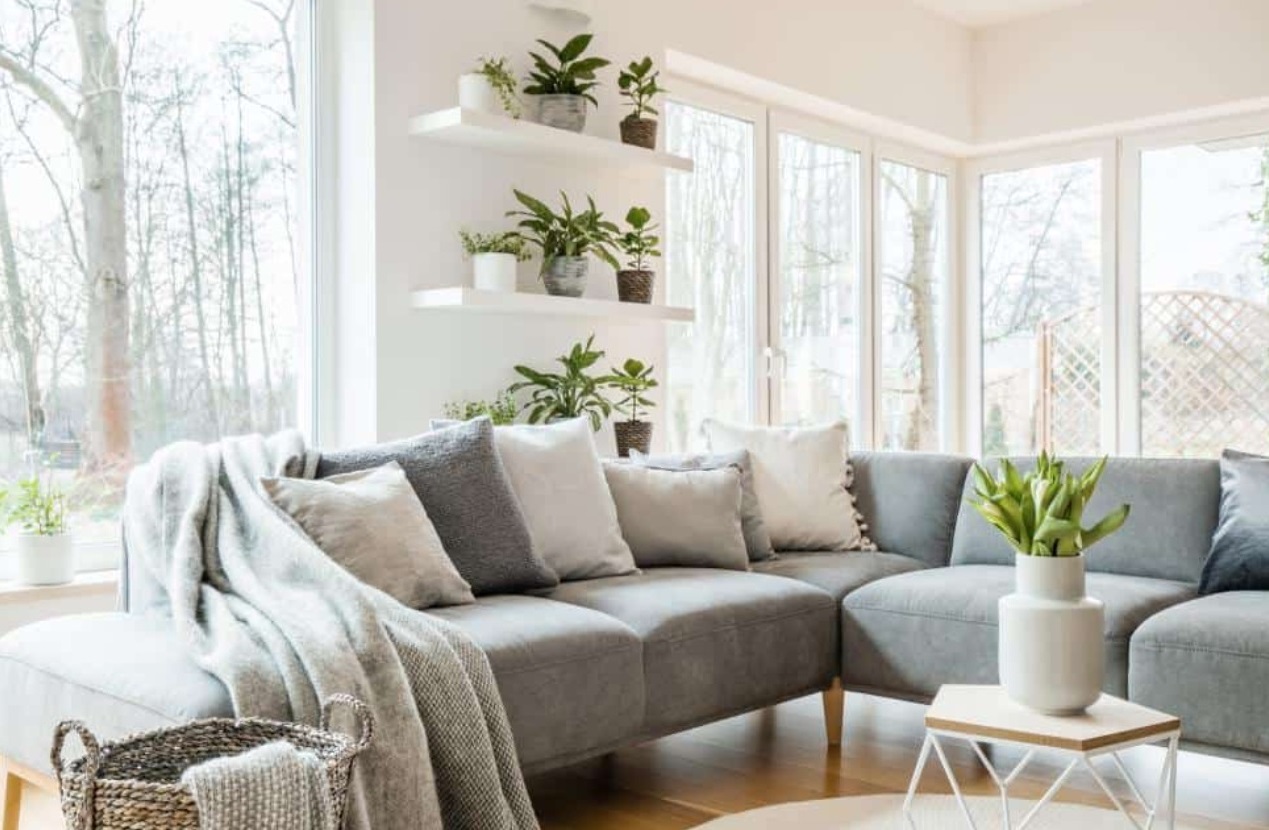
10. Sofa purchasing checklist
Consider the available space for your new sofa. 2-seater, 3-seater, and corner sofas are suitable for limited spaces. Models with additional sofa bed functionality offer versatility. Large sofas are suitable for spacious rooms. Families with five or more members should consider a living room as children tend to occupy more space. It is also important to consider space for your guests.
The color of your new sofa should complement or contrast with the existing furniture and room lighting. Pay attention to the color of the furniture and walls in the room. In smaller rooms, avoid bright sofa colors and color contrasts, as they can make the room appear smaller. Instead, opt for light and muted colors, which are less visually prominent and create a sense of space. In larger rooms, color contrasts and accents can visually unify the space and provide structure.
For pet owners, it is advisable to choose sofas made of sturdy leather or upholstered in microfiber, as thin leather, faux leather, and woven fabrics are prone to damage from claws and teeth. It is also recommended to use muted colors, as stains and pet hair are less visible on light-colored sofas.
Are you planning to redecorate your living room entirely? Remember that the sofa is just the beginning.
11. When should you invest in a new sofa?
Typically, a new sofa or couch is needed after 8 to 15 years. Higher quality materials and workmanship result in longer-lasting furniture. When considering a new sofa, pay attention to the base, upholstery, and cover. Creaks and squeaks when sitting or getting up indicate that the substructure is reaching the end of its lifespan. Look for a base made of hardwood when buying a new one, as it is the most durable. Over time, upholstery shows signs of wear from frequent use. Deep seat impressions or protruding springs are indicators that it’s time for a replacement. The condition of the sofa cover is also important. If the base frame and upholstery are still in good condition, consider replacing the cover or using a sheet to protect it from further wear and extend the sofa’s lifespan.
12. When should you get a new sofa?
Apart from the reasons for wear and tear mentioned earlier, there are also other situations that may necessitate getting a new sofa:
If you move to a new place with a different floor plan where your current sofa no longer fits.
If you want to give your living room a fresh look, which means you’ll need to replace the sofa too.
As your living circumstances change, your sofa needs may change as well. For instance, you might now require a small office space in the living room, which means you need a smaller sofa.
13. Final thoughts
The sofa is the centerpiece of our living room. By following our advice, you’ll soon find a sofa in our online store that you’ll enjoy for a long time. If you’re looking for a good deal, check out our sales section – you might just find your dream sofa there.
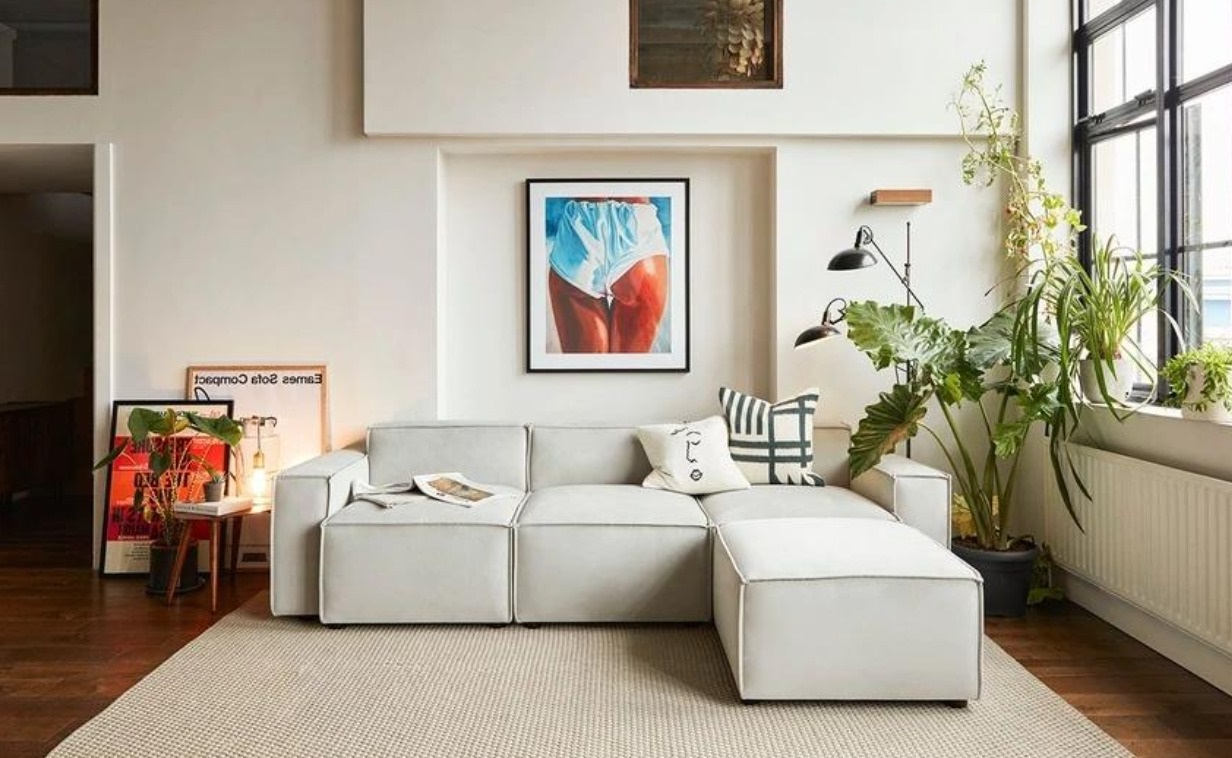
14. Frequently asked questions
Here’s a brief summary of the most important information about sofas and how to find the best one for you.
14.1. What makes a sofa comfortable?
Comfort is subjective, but for many people, a solid base spring, a stable spring core, and a high-quality cold foam layer combine to create a very comfortable experience. The different layers work together seamlessly to provide pleasant and long-lasting support and comfort. Seat height and seat depth are also important for comfort, with typical dimensions being a seat height of 40cm and a seat depth of 55cm. If you’re tall or short, it’s worth trying out different models in our stores.
14.2. What should a good sofa have?
To ensure you enjoy your sofa for a long time, it should have a sturdy frame, ideally made of hardwood or metal. If you plan on using the sofa as a regular bed, opt for a fixed bed model. Its cushions make it more suitable for sleeping than standard models.
14.3. Which suspension is best for a sofa?
Pocket spring cores are very durable and supportive. The steel springs are individually enclosed in small pockets, yet still connected to each other, providing a relatively firm seating feel. When combined with another layer of soft foam, the result is optimal comfort.
14.4. Which sofa is the best?
Determining the best sofa depends on individual needs. For durability and comfort, look for models with a solid hardwood base, a Nosag wave base, and additional layers of spring core and foam customized to your preferences. Sofas with extra functions like back adjustment or reclining features are also highly sought after for their flexibility.
14.5. Which sofa is the best?
Similar to a sofa, the absence of armrests or the presence of only one means it’s a good choice for compact spaces. A well-built frame, durable suspension, and comfortable upholstery serve as the foundation for a great seating experience. Adding special comfort features ensures long-term satisfaction with this style of sofa.
14.6. How long does a good sofa last?
A good sofa can be expected to last around 10 to 12 years. The actual lifespan depends on the components and usage.
14.7. Which sofas last the longest?
To ensure a sofa lasts about 10 years, prioritize quality when making your purchase. A solid wood or metal frame is essential. As for suspension, stable Nosag wave springs maintain their firmness longer than belts. Opt for multiple layers of spring core and modern foam or even latex for the upholstery. Cold foam will provide firmness to the back cushions. Frequent adjustments, such as converting the sofa to a bed or manipulating other parts, can stress the moving components. It’s crucial to choose quality when it comes to these features.
